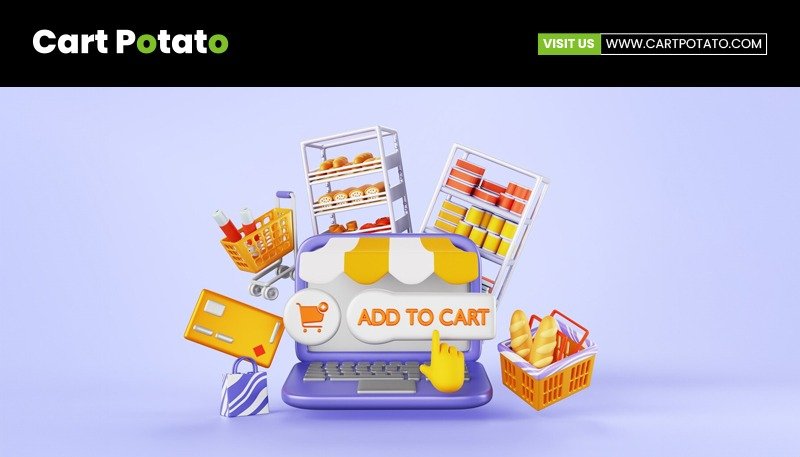
Ecommerce Platform Comparison: Which Platform Delivers the Best Value, Conversion, and Speed
Large brands are continually seeking ways to add value to their teams and customers by exploring various ecommerce platforms. If you’re in this position, it’s essential to choose a platform that can sell, innovate, scale, and automate in line with your business goals. However, it’s crucial to understand that these features come with associated costs. Let’s Compare top ecommerce platforms.
Choosing the wrong ecommerce platform can become expensive, complicated, and time-consuming, often resulting in delays and unexpected fees. If you’re looking to revolutionize the way your enterprise operates, this ecommerce platform comparison is for you.
What Makes an Ecommerce Platform the Best?
The TCO of an Ecommerce Platform
Understanding the total cost of ownership (TCO) of each platform helps answer the vital question: “Which one is the best fit for me, my team, and our budget?”
The Speed of an Ecommerce Platform
Beyond TCO, we’ll explore the site and server speeds of platforms like Shopify, Salesforce, Adobe Commerce, WooCommerce, and BigCommerce.
The Conversion Rate of an Ecommerce Platform
Many brands are discovering that simplifying the checkout process can significantly increase their conversion rates. But how do you determine the best converting ecommerce platform? It comes down to the platform’s innovation. For example, using Shop Pay within Shopify’s checkout system, a leading global consulting firm found that conversion rates could increase by up to 50% compared to guest checkout. Advanced features like Shop Pay Installments and Shop Cash within Shopify’s identity wallet further enhance the customer experience, making the checkout process user-friendly and integrated with innovative financial services and loyalty programs.
Four Top Ecommerce Platform Price and Site Speed Comparisons
Let’s dive into a detailed comparison of Shopify, WooCommerce, BigCommerce, Adobe Commerce (Magento), and Salesforce Commerce Cloud to find out how we line up against each when it comes to TCO and site speed.
Shopify vs. WooCommerce: TCO, Conversion, and Site Speed Comparison
Platform Fees and Ecommerce Stack Costs
Shopify users reported the lowest platform costs on average, with WooCommerce users experiencing 32% higher costs due to increased support needs and frequent version upgrades.
Operational and Support Costs
Shopify’s operational simplicity and reduced developer support needs result in the lowest operating costs. In contrast, WooCommerce can incur additional infrastructure costs, such as hosting, leading to 41% higher operating costs on average.
Implementation Costs
A WooCommerce implementation will cost your business 49% more on average than if you were to implement and set up on Shopify. Shopify’s simplicity and developer-friendly back-end system make it less costly to implement than WooCommerce, which can require significant customization and integration of third-party applications.
Setup Costs
Shopify allows you to start a new storefront 41% faster than on WooCommerce. On average, the time to launch on WooCommerce is 70% slower compared to Shopify.
Conversion
Assuming a 10% margin on goods sold, Shopify’s checkout converts 17% better than WooCommerce, translating to a roughly 1.7% TCO offset when expressed as a percentage of TCO.
Storefront Speed
A faster website provides a smoother shopping experience from beginning to end, which can lead to higher conversion rates. Shopify data indicates that even a half-second improvement in site speed can significantly lower bounce rates and increase conversion. So, how does WooCommerce’s site speed compare to Shopify’s? 93% of Shopify stores are fast versus only 15% of WooCommerce stores, and Shopify stores render 2.4x faster than WooCommerce stores.
Server Speed
All Shopify plans are fully hosted by our servers, which have proven to be fast and reliable for some of the biggest retailers on the planet. That’s why Shopify’s server speed is 3.9x faster on average than WooCommerce.
Shopify vs. BigCommerce: TCO, Conversion, and Site Speed Comparison
Platform Fees and Ecommerce Stack Costs
Shopify users benefit from lower platform costs on average compared to BigCommerce users, who experience higher costs due to additional fees for scaling features and third-party applications.
Operational and Support Costs
Shopify’s integrated ecosystem reduces the need for extensive developer support, resulting in lower operational costs. BigCommerce users often face higher operational costs due to the need for more extensive customization and integration.
Implementation Costs
Shopify’s streamlined setup process makes implementation less costly and faster compared to BigCommerce, which can require more extensive customization and integration efforts.
Setup Costs
Setting up a new storefront on Shopify is typically faster than on BigCommerce, thanks to Shopify’s user-friendly interface and comprehensive support resources.
Conversion
Shopify’s optimized checkout process and advanced features like Shop Pay lead to higher conversion rates compared to BigCommerce. This translates into a significant TCO advantage for Shopify users.
Storefront Speed
Shopify stores generally load faster than BigCommerce stores, providing a better user experience and higher conversion rates. Shopify’s platform is designed for speed, which is crucial for retaining customers and reducing bounce rates.
Server Speed
Shopify’s fully hosted servers ensure reliable and fast performance, outperforming BigCommerce in server speed tests. This reliability is critical for maintaining uptime and delivering a seamless shopping experience.
Shopify vs. Adobe Commerce (Magento): TCO, Conversion, and Site Speed Comparison
Platform Fees and Ecommerce Stack Costs
Shopify offers lower platform fees compared to Adobe Commerce, which often incurs higher costs due to its complex and customizable nature.
Operational and Support Costs
Shopify’s operational costs are generally lower than Adobe Commerce’s, which can require significant developer resources and maintenance efforts.
Implementation Costs
Implementing Shopify is less costly and time-consuming compared to Adobe Commerce, which often requires extensive customization and third-party integrations.
Setup Costs
Shopify’s setup process is faster and more straightforward than Adobe Commerce, allowing businesses to launch their stores more quickly.
Conversion
Shopify’s advanced checkout features, such as Shop Pay, result in higher conversion rates compared to Adobe Commerce, providing a TCO advantage.
Storefront Speed
Shopify stores typically load faster than Adobe Commerce stores, thanks to Shopify’s optimized infrastructure and performance enhancements.
Server Speed
Shopify’s hosting solutions offer superior server speed and reliability compared to Adobe Commerce, ensuring a better user experience and higher uptime.
Shopify vs. Salesforce Commerce Cloud: TCO, Conversion, and Site Speed Comparison
Platform Fees and Ecommerce Stack Costs
Shopify users experience lower platform costs on average compared to Salesforce Commerce Cloud users, who face higher fees for advanced features and customization options.
Operational and Support Costs
Shopify’s integrated and user-friendly platform reduces operational and support costs, while Salesforce Commerce Cloud can require significant developer resources and ongoing maintenance.
Implementation Costs
Shopify’s implementation costs are lower compared to Salesforce Commerce Cloud, which often involves complex setup and customization.
Setup Costs
Setting up a Shopify store is typically faster and more efficient than on Salesforce Commerce Cloud, allowing for quicker time to market.
Conversion
Shopify’s streamlined checkout process and innovative features lead to higher conversion rates compared to Salesforce Commerce Cloud, providing a TCO advantage.
Storefront Speed
Shopify stores generally offer faster load times than Salesforce Commerce Cloud stores, enhancing the user experience and reducing bounce rates.
Server Speed
Shopify’s fully hosted platform ensures faster and more reliable server performance compared to Salesforce Commerce Cloud, supporting better site stability and user experience.
Shopify vs. Adobe Commerce (Magento): TCO, Conversion, and Site Speed Comparison
Platform Fees and Ecommerce Stack Costs
Shopify offers more affordable platform fees compared to Adobe Commerce. Adobe Commerce users often incur higher costs due to its need for extensive customizations and advanced features, resulting in increased overall expenses.
Operational and Support Costs
Shopify’s integrated and user-friendly platform significantly reduces operational and support costs. In contrast, Adobe Commerce requires more extensive developer resources and ongoing maintenance, leading to higher operational costs.
Implementation Costs
Shopify’s straightforward setup and developer-friendly back-end system make it more cost-effective to implement compared to Adobe Commerce. Adobe Commerce’s implementation costs are substantially higher, averaging 65% more than Shopify’s due to the platform’s complexity and customization requirements.
Setup Costs
Shopify allows businesses to launch new storefronts 42% faster than Adobe Commerce. The average setup and launch time on Adobe Commerce is notably slower, making Shopify a more efficient option for businesses looking to get online quickly.
Conversion
Assuming a 10% margin on goods sold, Shopify’s optimized checkout process converts 20% better than Adobe Commerce, providing a significant advantage. This improvement translates to a roughly 2% TCO offset when expressed as a percentage of TCO.
Storefront Speed
A faster website leads to a smoother shopping experience, which can boost conversion rates. Shopify’s data shows that even a slight improvement in site speed can significantly reduce bounce rates and enhance conversion. How does Adobe Commerce’s site speed compare to Shopify’s? While 87% of Shopify stores are fast, only 38% of Adobe Commerce stores achieve similar speeds. Shopify stores also render 1.6x faster than Adobe Commerce stores.
Server Speed
Shopify’s fully hosted platform ensures fast and reliable server performance, supporting some of the world’s largest retailers. Shopify’s server speed is 2.1x faster on average compared to Adobe Commerce, providing a more reliable and efficient experience for users.
Shopify vs. Adobe Commerce: TCO, Conversion, and Site Speed Comparison
Platform Fees and Ecommerce Stack Costs
Shopify users reported the lowest platform costs on average, with Adobe Commerce users experiencing 42% higher costs due to less flexible pricing. Shopify’s transparent and predictable pricing structure contributes to its cost efficiency.
Operational and Support Costs
Adobe Commerce incurs, on average, 24% higher operational and support costs compared to Shopify. This is largely attributed to Adobe’s complex legacy commerce platform, which often requires more internal IT resources or external partners for ongoing updates and enhancements.
Implementation Costs
Shopify’s simplicity and user-friendly back-end system make it less costly and 40% faster to implement on average than Adobe Commerce. The streamlined process reduces the need for extensive customization and integration, leading to significant time and cost savings.
Setup Costs
Setting up and launching a new storefront on Shopify is 40% faster than on Adobe Commerce. In contrast, Adobe Commerce takes 66% more time for the same process, making Shopify the more efficient choice for businesses looking to get online quickly.
Conversion
Assuming a 10% margin on goods sold, Shopify’s checkout converts 5% better than Adobe Commerce. This improvement translates to a roughly 0.5% TCO offset when expressed as a percentage of TCO, providing a notable advantage in conversion efficiency.
Storefront Speed
A faster website enhances the shopping experience from beginning to end, leading to higher conversion rates. Shopify data indicates that even a half-second improvement in site speed can significantly reduce bounce rates and boost conversions. So, how does Adobe Commerce’s site speed compare to Shopify’s? While 93% of Shopify stores are fast, only 18% of Adobe Commerce stores achieve similar speeds. Additionally, Shopify stores render twice as fast as Adobe Commerce stores, offering a superior user experience.
Server Speed
All Shopify plans are fully hosted by our servers, which have proven to be fast and reliable enough for some of the biggest retailers on the planet. This robust infrastructure ensures that Shopify’s server speed is 3.4x faster on average than Adobe Commerce, providing a more reliable and efficient platform for ecommerce businesses.
Why Shopify Stands Out?
Not only are our customers getting the perks of an innovative, agile, and secure platform, but they’re also getting the best in TCO. Shopify’s TCO is up to 36% better than its competitors and 33% better on average. This research consistently shows our platform outperforms others in terms of cost, ease of use, and conversion rates. Shopify is the clear winner for businesses looking to maximize their ecommerce potential while minimizing costs.
When it comes to speed, Shopify is unmatched.
Based on the site speed data we’ve gathered, 93% of businesses on Shopify have a fast store—more than any other major commerce platform—proving Shopify sites are quick right out of the gate, no matter where your customers are browsing from. Many brands that have switched to Shopify noticed their sites became faster almost overnight.
If you’re thinking about making the move, know that Shopify isn’t just about getting you online quickly—it’s about helping you make money faster and scaling up to the dream business you’ve always wanted. By choosing Shopify, you’re choosing a platform designed to help you grow and succeed in the competitive ecommerce landscape.
If you want to make the move to Shopify, contact us at Cart Potato. We’re here to help you every step of the way, ensuring a seamless transition and setting you up for success.








